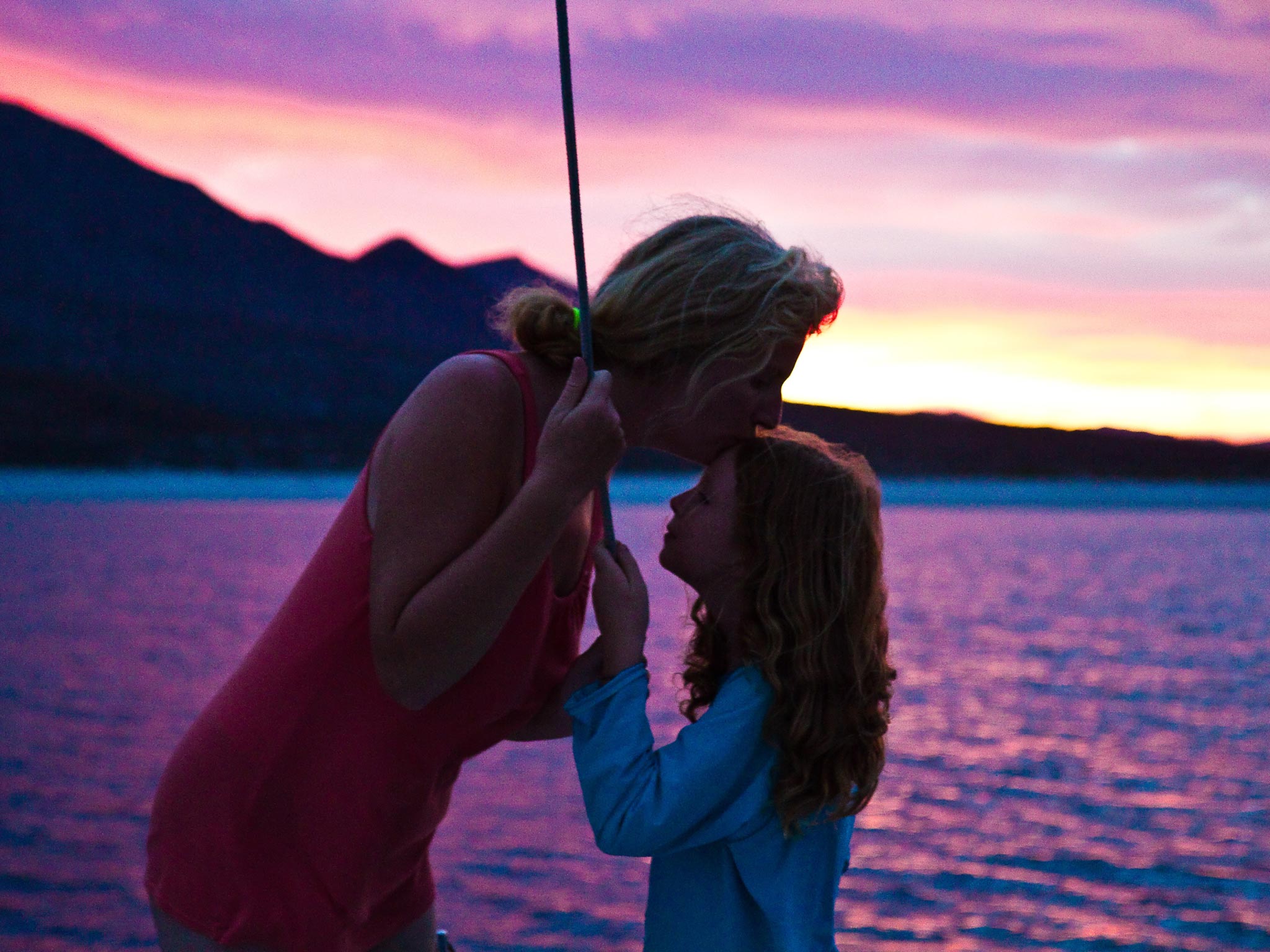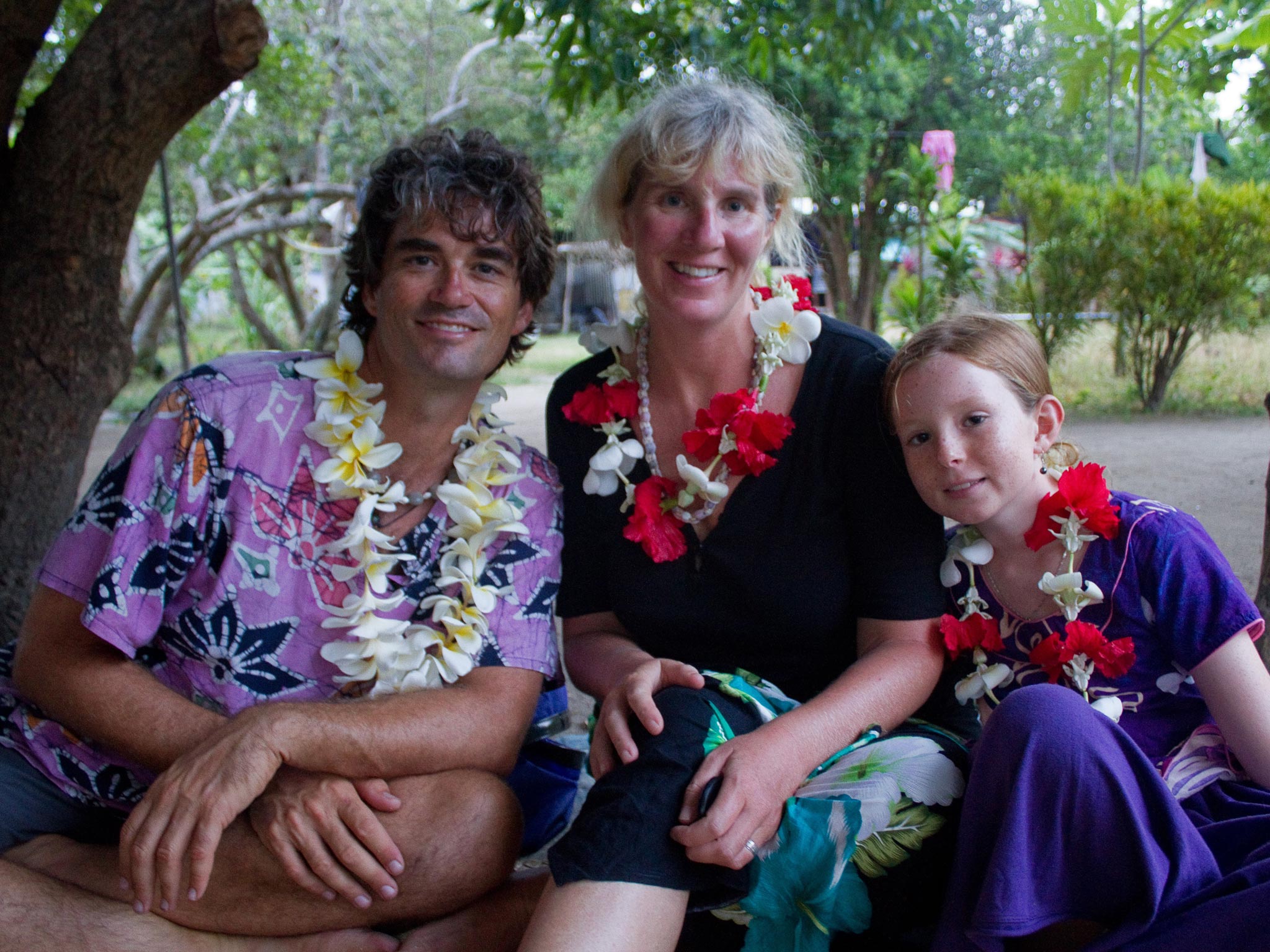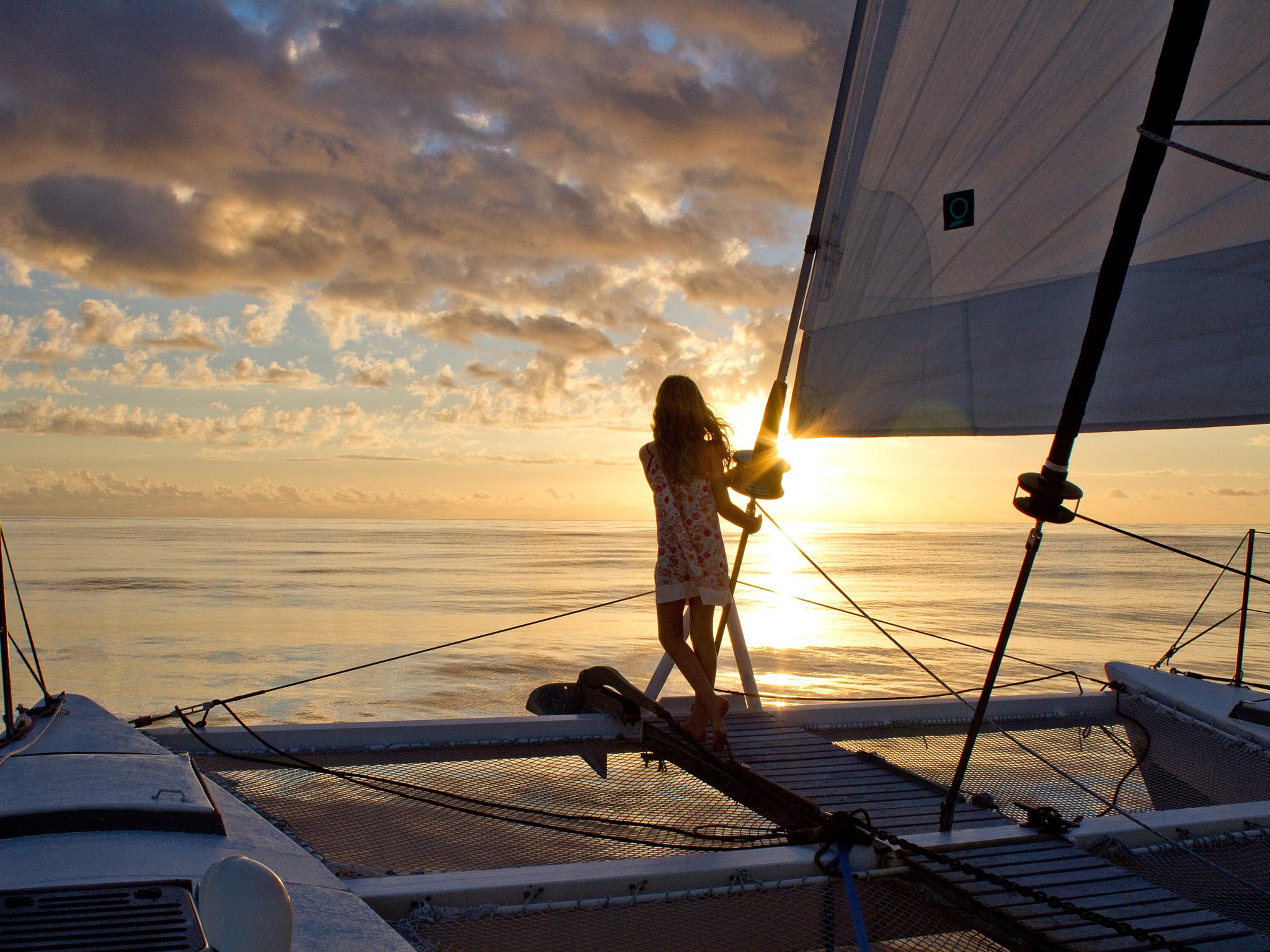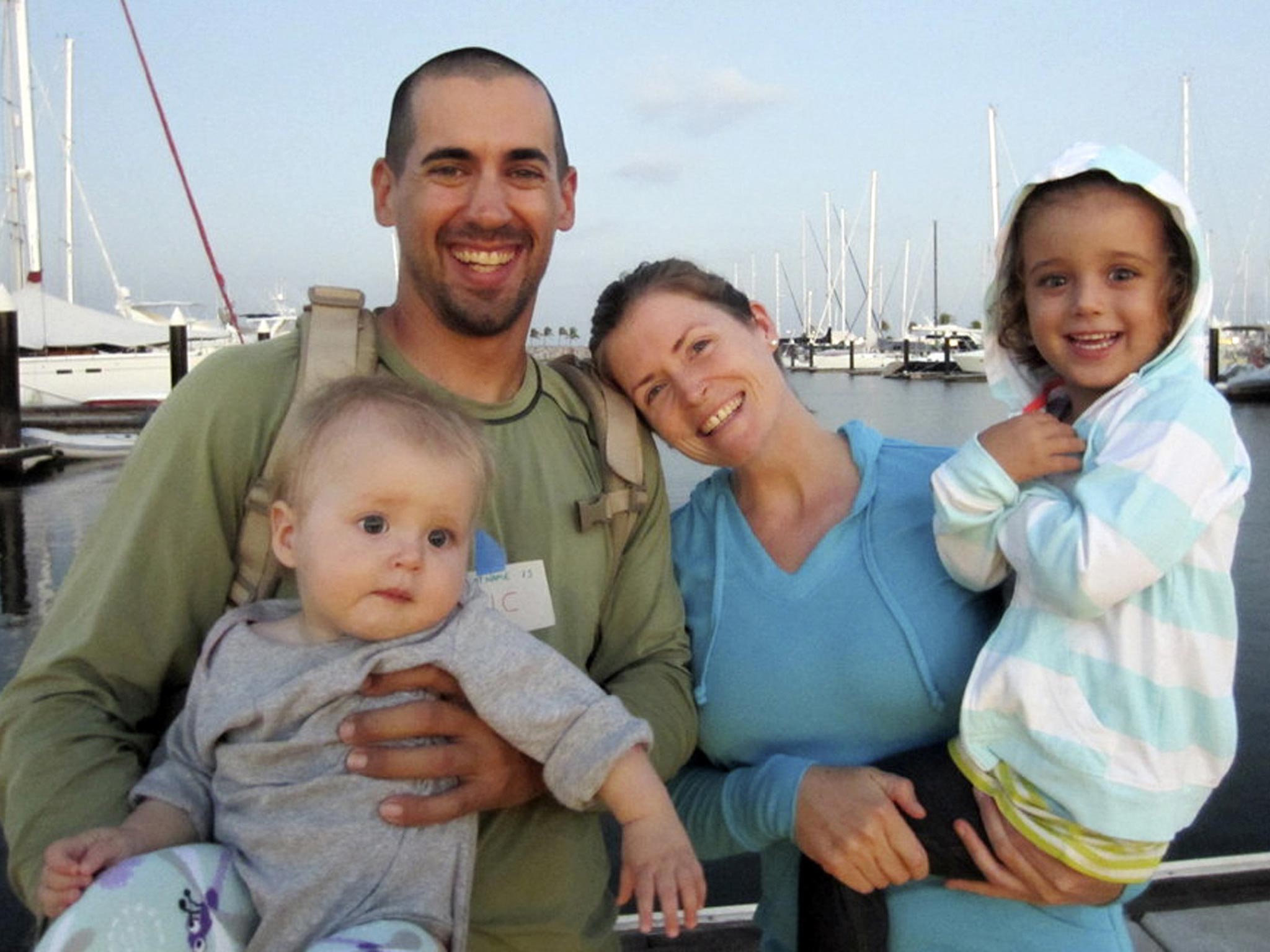Against the tide: Raising your children on a sailing boat has its dangers, but seafaring parents claim the benefits are vast
The dangers were highlighted last week when a cruising family had to be rescued 900 nautical miles from Mexico

My husband and I are raising a child while travelling aboard our 40ft sailing boat Ceilydh. The world has two types of responses to our parenting choice: “Lucky kid!” and “That's crazy!”
The crazy chorus is loud and angry after a fellow cruising family underwent a very public rescue this week. Sailors Eric and Charlotte Kaufman were sailing their vessel, the Rebel Heart, from Mexico to New Zealand with their young daughters Lyra, one, and Cora, three, when, 900 nautical miles from Mexico, they made an emergency call to the Coast Guard after their youngest daughter became seriously ill and the boat's power and steering malfunctioned.
As the rescue played out in the news, with the US Navy and the National Guard both stepping in, many questions were raised: Who should pay for the no-doubt costly rescue of this family? Did the Kaufmans have enough training for this big trip? And, most of all, what were they thinking taking their young daughters on such a risky adventure?
My husband and I sailed for three-and-a-half years, over 12,000 miles, and through 10 countries before pulling into a foreign port and having a child. We kept our adventures land-based for a while, not setting off on our daughter Maia's first extended cruise until she was three. At 12 years of age, Maia has now put in more sea hours than shopping hours, and is more familiar with the stars in the sky (in both the Northern and Southern hemispheres) than the ones in the tabloids. She's graceful and self-assured, in no small part because of her unconventional childhood.
Like the Kaufmans, we're part of an international network of cruising families who make up an estimated 10-15 per cent of the 10,000 or so cruising boats that are out sailing the world at any one time. (I'm actually friendly with Charlotte Kaufman, whom I met through blogging several years ago.) Currently, hundreds of these families are showing their support for the Kaufmans in the Facebook group Friends of Rebel Heart and through a fundraising campaign that has raised more than $10,000 (£6,000) to help with their expenses, as their boat was their home, and they lost it.
I'm not going to lie: Our lifestyle comes with risks. There are storms at sea, illnesses in remote locations, white-knuckle moments, and near misses. We knew the family on the Nina, the 85-year-old American schooner that disappeared after it sailed from New Zealand on 29 May, 2013, bound for Newcastle, Australia. We've been involved in a handful of rescues and have known people who lost their boats and others who lost their lives.

One night, when Maia was eight, a weather bomb (a low-pressure system that deepens by more than 24 millibars in 24 hours) hit our Mexican anchorage. When another boat's Mayday rang out over the radio, I hustled my daughter into her lifejacket, put her cat in a backpack, and held her tight. Meanwhile, my husband struggled to save our boat.
Most boats are lost not because of one mishap but because of a cascade of small failures and errors. We had an unresolved engine problem and, in the ferocious wind, we couldn't see where safety lay, which meant that as two huge fishing boats were blown toward us, we had no way to dodge them. Even if we could, we had no idea where to go. We were saved by luck and skill. Perhaps exposing Maia to that sort of danger was reckless. But for me, the potential payoff has always outweighed the risk.
After all, it was risky when, at 14 months old, we took Maia across Canada. Shivering in a remote northern campsite in the autumn cold, we woke her after midnight to show her the Northern Lights.
When she was four, she climbed her first mountain. She insisted on hauling herself up the steep summit under her own power and pumped her fist mightily when she made it. We crossed the Pacific when she was nine, part of a Puddle Jump fleet, an annual rally where sailors travel from the West Coast of the Americas to French Polynesia, that included more than a dozen “kid boats,” as we call them. In the Tuamotus, we took Maia snorkelling and once inadvertently jumped in amid a school of timid reef sharks. I lifted her legs to the surface to keep her from kicking one as we sputtered in astonishment. A short while later, she swam alone with a giant manta ray.

I know this life isn't for everyone. But it's also not a life that needs to exclude children. Risk can be balanced by skill and knowledge. As with most boat parents, we've spent years educating ourselves about everything from remote first aid, to weather forecasting, to home schooling, to emergency management, and even to shark behaviour, all the while amassing a savings, outfitting a boat, and reading bedtime stories.
How much risk is too much risk is a question that each of us asks ourselves and a calculation we spend every day trying to solve. I suspect parents in the suburbs do the same. I know a lot of people think we're selfish – unable or unwilling to give up our adventurous lifestyle to do what's best for our child. But most of us boat parents chose to embark on voyages with our kids not because they're inconveniently along for the ride but because we've made an intentional choice to share the journey with them.
Even when they're very young, as with the night that we woke Maia and bundled her up to look at the Northern Lights, the experience wasn't wasted simply because she was too small to remember. I recall the moment when Maia reached to the sky in awe. She showed the first glimmers of the well-developed sense of wonder that she looks at the sky with today.
And we're not just developing wonder, here. There is research to suggest that early childhood experiences are, as Harvard University researchers put it: “Biologically embedded in the development of the brain and other organ systems and have lifelong impacts on learning, behaviour, and both physical and mental health.” Not to mention that older kids experience very real and measurable benefits from their travels, which range from increased self-esteem to a greater sense of independence.
One online friend, Daphne Stuart, became a boat kid at 17 months and says a childhood filled with wonder made her decide that her children should have the same experience: “The dolphins playing in our wake, the orcas swimming by, the bald eagle scooping up a fish, the beautiful sunset, the people in remote locations. This was a gift my parents gave me and the gift that I want to give my boys.”

Sara Johnson, one of a trio of authors of the forthcoming The Complete Guide to Cruising With Kids, crossed the Pacific in 2012 with her husband and children Holly (then three) and Leah (six). She found that not every benefit was planned, and recounts on her website how her kids have played with dozens of children that they didn't share a common language with and have picked up smatterings of Spanish, French, Tongan, and now Maori as they go to school in Auckland, New Zealand.
As for Maia, we've watched her grow from the little girl who taught her grandmother how to haggle for clothes in Mexico into the almost teenager with a firm grasp on world events and a strong belief that she has a role to play as a global citizen. During a stint of being a “normal” child in Australia, she campaigned to have recycling at school and it was her choice to redirect her Christmas money to Kiva, the not-for-profit online lending platform, not just to help struggling business people in need – but to help her friends. She's met so many people.
The simple answer to those who accuse us of putting our daughter in danger is that this life is the best gift that we know to give her. It is wondrous to slip into a foreign country at first light, arriving as ancient seafarers did, the land slowly revealing her secrets as our boat ghosts unnoticed into an unfamiliar harbour. We are letting our daughter discover what it means to explore. Yes, there is risk involved in daring to show her the world – but the alternative, the one where we never share our passions with our child, and never show her the value in pursuing her own, seems far more dangerous.
Diane Selkirk is the author of 'The Complete Idiot's Guide to Sailing' and a freelance writer currently based in Australia who has written for 'Men's Journal', 'Outside', and 'Reader's Digest'. A version of this article originally appeared on Slate.com
Join our commenting forum
Join thought-provoking conversations, follow other Independent readers and see their replies
Comments
Bookmark popover
Removed from bookmarks